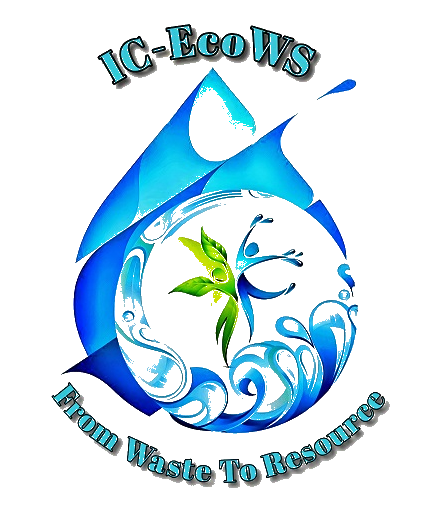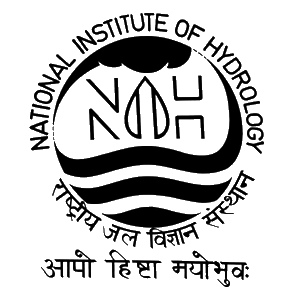 |
 |
(IC-EcoWS) (Project Funded by Department of Science & Technology (DST) , Government of India) |
 |
 |
 |
(IC-EcoWS) (Project Funded by Department of Science & Technology (DST) , Government of India) |
 |
Shweta Yadav, V. C. Goyal
Wetlands in the Developing World,
https://link.springer.com/article/10.1007/s13157-022-01624-9
Healthy pond ecosystems are critical for achieving several sustainable development goals (SDG) through numerous ecosystem services (e.g., flood control, nutrient retention, and carbon sequestration). However, the socio-economic and ecological value of ponds is often underestimated compared to the larger water bodies. Ponds are highly vulnerable to mounting land-use pressures (e.g., urban expansion, and agriculture intensification) and environmental changes, leading to degradation and loss of the pond ecosystem. The narrow utilitarian use-based conservation fails to recognize the multiple anthropogenic pressures and provides narrow solutions which are inefficient to regenerate the degraded pond ecosystem. In this paper, we holistically examined the legal challenges (policies) and key anthropogenic and environmental pressures responsible for pond degradation in India. The country is strongly dedicated to attaining SDG and circular economy (CE) through aquatic ecosystem conservation and restoration. Considerable efforts are required at the administration level to recognize the contribution of pond ecosystem services in attaining global environmental goals and targets. Worldwide restoration strategies were reviewed, and a framework for pond restoration and conservation was proposed, which includes policies and incentives, technologies such as environmental-DNA (e-DNA), life cycle assessment (LCA), and other ecohydrological measures. Nature-based solutions (NBS) offer a sustainable and cost-effective approach to restoring the pond’s natural processes. Furthermore, linkage between the pond ecosystem and the CE was assessed to encourage a regenerative system for biodiversity conservation. This study informs the need for extensive actions and legislative reforms to restore and conserve the pond ecosystems.
Keywords: Wetlands
Sandeep K. Malyan, Shweta Yadav, Vikas Sonkar, V. C. Goyal, Omkar Singh, Rajesh Singh
Water Environment Research,
https://doi.org/10.1002/wer.1599
Constructed wetland systems (CWs) are biologically and physically engineered systems to mimic the natural wetlands which can potentially treat the wastewater from the various point and nonpoint sources of pollution. The present study aims to review the various mechanisms involved in the different types of CWs for wastewater treatment and to elucidate their role in the effective functioning of the CWs. Several physical, chemical, and biological processes substantially influence the pollutant removal efficiency of CWs. Plants species Phragmites australis, Typha latifolia, and Typha angustifolia are most widely used in CWs. The rate of nitrogen (N) removal is significantly affected by emergent vegetation cover and type of CWs. Hybrid CWs (HCWS) removal efficiency for nutrients, metals, pesticides, and other pollutants is higher than a single constructed wetland. The contaminant removal efficiency of the vertical long- term sink of the pollutants, such subsurface flow constructed wetlands (VSSFCW) commonly used for the treatment of domestic and municipal wastewater ranges between 31% and 99%. Biochar/ zeolite addition as substrate material further enhances the wastewater treatment of CWs. Innovative components (substrate materials, plant species) and factors (design parameters, climatic conditions) sustaining the as nutrients and heavy metals in the CWs should be further investigated in the future.
Keywords: affecting factors, constructed wetland system, macrophytes, removal mechanisms, substrates, waterflow regime
Pradip P. Kalbar
Journal of Indian Water Works Association LIII(4)(October-December 2021):247-252
https://www.researchgate.net/publication/357578990_Need_for_Adopting_Hybrid_Treatment_Systems_to_Reduce_OM_Costs_of_Sewage_Treatment_and_Recycling_in_India
In this study, Mechanized Treatment Systems (MTSs) and Natural Treatment Systems (NTSs) for Wastewater Treatment (WWT) and recycling are compared. Based on the comparison of land requirement and O&M costs, the novel approach of Hybrid Treatment Systems (HTSs) is proposed. The HTSs approach overcomes the limitations of the MTSs and NTSs by combining these treatment systems at an appropriate level. The study shows that significant operational energy savings and additional benefits such as nutrient and emerging contaminant removal can be achieved by adopting the HTSs approach. The life cycle cost analysis shows that HTSs are more economical than MTSs in urban, peri-urban, and rural settings. Hence, there is a need to adopt HTSs by central and state government in their river rejuvenation and clean water missions benefits and hence will help India to achieve various national and international commitments of WWT and recycling.
Nikita S.Kakwani, Pradip P. Kalbar
Sustainable Production and Consumption (Volume 31, May 2022, Pages 723-735)
https://www.sciencedirect.com/science/article/abs/pii/S2352550922000823
Urban Water Management (UWM) involves balancing the inflows and outflows of water such that water entering and leaving the system boundary reduces with time. Several frameworks and indicators have been formulated for UWM with a limited focus to achieve circularity of water flows at all the phases of the engineered urban water cycle. A novel indicator called ‘Water Circularity Indicator’ (WCI) is developed in this study to assess, monitor and improve the circularity of urban water flows. The WCI is derived from Material Circularity Indicator developed by Ellen McArthur Foundation and Granta design. In the current study, WCI is initially validated using 100 scenarios considering the variation of 5Rs, i.e., reduce, reuse, recycle, reclaim and restore. Further, WCI is compared with other indicators focusing on urban water management from the literature. The evaluation of results indicate that WCI correlates with most of the indicators selected for comparison. The WCI uses the water mass balance principle in its derivation and distinctively captures reuse, recycling, reclamation and restoration strategies in a single indicator value compared to other indicators. The WCI provides maximum information in a single indicator value ranging from 0 to 1.0. A higher value of WCI indicates lesser extraction of virgin water resources and wastewater disposal with maximum water circulation within the city under consideration. The novelty of WCI lies in its unique approach of considering all 5Rs and easy interpretation for decision-makers across multiple domains. WCI is recommended to be used by city authorities and policy makers for achieving water goals and for Circular Economy (CE) implementation. Policies can be formulated based on WCI to enhance CE in the water sector and reduce virgin water consumption, ultimately leading to water conservation.
Pradip P. Kalbar
This article is published in the Clean Technologies and Environmental Policy journal:
Kalbar, P.P. Hybrid treatment systems: a paradigm shift to achieve sustainable wastewater
treatment and recycling in India. Clean Technologies and Environmental Policy (2021).
Journal of Environmental Management, Volume 271, 2020, 111010, ISSN 0301-4797,
https://doi.org/10.1007/s10098-021-02034-x
This study assesses a trade-off between Mechanized Treatment Systems (MTSs) and Natural Treatment Systems (NTSs) for Wastewater Treatment (WWT) and recycling approaches. Investigation on this tradeoff is carried out using field data on Operation and Maintenance (O&M) costs and land requirements. It is then shown that none of them in solo are techno-economically viable and environmentally sustainable for WWT in urban areas in India. Hence, a paradigm shift in WWT in India is proposed to adopt Hybrid Treatment Systems (HTSs) approach. HTSs involve treatment considering a combination of natural and mechanized treatment approaches. Adoption of HTSs will result in energy savings and environmental benefits and hence will help India to achieve various national and international commitments of WWT and recycling.
Keywords: Wastewater treatment; Recycling; Natural treatment systems; Hybrid treatment; Sustainability; India
Nikita S. Kakwani, Pradip P. Kalbar
Journal of Environmental Management, Volume 271, 2020, 111010, ISSN 0301-4797,
https://doi.org/10.1016/j.jenvman.2020.111010
(https://www.sciencedirect.com/science/article/pii/S0301479720309385)
Increasing urbanization and rapid depletion of resources have forced authorities to shift from traditional linear system of take-make-use-dispose to circular system of resource conservation. Circular Economy (CE) is a sustainable development approach that works on the waste management strategy of reduce, reuse, recycle, and recover. Considerable work has been performed on CE in various sectors such as in electronic sector, construction sector, automotive sector, etc. However, CE in the water sector is gaining rapid attention, because of imbalance in water resources and the prevailing linear approach. The aim of this study is to review the world-wide growth of CE concept in the water sector from an economic, environmental, social, and technical perspective. 98 publications were selected by systematic literature review and categorized in economic, environmental, social, and technical criteria including a combination of multiple criteria. In this study, the world-wide status of CE implementation in the water sector is assessed and strategies to encourage and enhance CE implementation are proposed. The six BS8001:2017 principles and 6Rs (reduce, reuse, recycle, reclaim, recover, restore) of waste management are critically analyzed for deriving recommendations and successful implementation of CE in water sector. Finally, challenges and opportunities to implement CE in the water sector in India are discussed.
Keywords: Circular economy; Water; Wastewater; Resources; Sustainability; India
Kalbar, P.P.
Clean Techn Environ Policy (2021).
https://doi.org/10.1007/s10098-021-02034-x
This study assesses a trade-off between mechanized treatment systems and natural treatment systems for wastewater treatment (WWT) and recycling approaches. Investigation on this trade-off is carried out using field data on operation and maintenance (O and M) costs and land requirements. It is then shown that none of them in solo are techno-economically viable and environmentally sustainable for WWT in urban areas in India. Hence, a paradigm shift in WWT in India is proposed to adopt hybrid treatment systems (HTSs) approach. HTSs involve treatment considering a combination of natural and mechanized treatment approaches. Adoption of HTSs will result in energy savings and environmental benefits and hence will help India to achieve various national and international commitments of WWT and recycling.
Keywords:Wastewater treatment, Recycling, Natural treatment systems, Hybrid treatment, Sustainability, India
Vishesh Verma, Abhishek Soti, Niha Kulshreshtha, Aakanksha Rampuria
Journal of Environmental Management (Volume 317, 1 September 2022, 115406)
,
http://dx.doi.org/10.1016/j.jenvman.2022.115406
This work was aimed to assess the contribution of classical nitrogen removal pathways in two deep constructed wetlands CW1 and CW2 located at Jaipur, India. Nitrogen mass balance revealed that 44.87% and 43.77% losses of T-N in CW1 and CW2 were unaccounted for. To elucidate these significant losses, the study was extended to assess the occurrence and contribution of a novel pathway (ANAMMOX) in overall nitrogen removal. The ratio of NH4+-N (removed) & NO3−-N (produced) in CW1 & CW2 indicated that ANAMMOX could be one of the key pathways for nitrogen removal in the CWs besides nitrification-denitrification in microbial films. The molecular analysis confirmed bands of ANAMMOX bacteria developed intrinsically. The study revealed that deep wetlands can offer a feasible option for the sustenance of ANAMMOX bacteria and may help develop design parameters for CWs for achieving higherT-N removal withsimilarsurface area as that of conventional wetlands.
Keywords:Constructed wetland; Anaerobic ammonium oxidation (ANAMMOX); Nitrification; Denitrification; Nitrogen mass balance
Aakanksha Rampuria, Akhilendra Bhushan Gupta, Urmila Brighu
Bioresource Technology, Volume 314,2020, 123737, ISSN 0960-8524,
https://doi.org/10.1016/j.biortech.2020.123737
(https://www.sciencedirect.com/science/article/pii/S0960852420310099)
This work was aimed to assess the contribution of classical nitrogen removal pathways in two deep constructed wetlands CW1 and CW2 located at Jaipur, India. Nitrogen mass balance revealed that 44.87% and 43.77% losses of T-N in CW1 and CW2 were unaccounted for. To elucidate these significant losses, the study was extended to assess the occurrence and contribution of a novel pathway (ANAMMOX) in overall nitrogen removal. The ratio of NH4+-N (removed) & NO3−-N (produced) in CW1 & CW2 indicated that ANAMMOX could be one of the key pathways for nitrogen removal in the CWs besides nitrification-denitrification in microbial films. The molecular analysis confirmed bands of ANAMMOX bacteria developed intrinsically. The study revealed that deep wetlands can offer a feasible option for the sustenance of ANAMMOX bacteria and may help develop design parameters for CWs for achieving higherT-N removal withsimilarsurface area as that of conventional wetlands.
Keywords:Constructed wetland; Anaerobic ammonium oxidation (ANAMMOX); Nitrification; Denitrification; Nitrogen mass balance
Rampuria, A., Kulshreshtha, N.M., Gupta, A. B., Brighu, U.
World Journal of Microbiology and Biotechnology volume 37, Article number: 40 (2021)
https://doi.org/10.1007/s11274-021-03001-w
Traditionally nitrogen transformation in constructed wetlands (CWs) has been attributed to the activities of aerobic autotrophic nitrifiers followed by anoxic heterotrophic denitrifiers. However, the nitrogen balances in such systems are far from being explained as a large fraction of the losses remain unaccounted for. The classical nitrification-denitrification theory has been successfully employed in certain unit processes by culturing fast-growing bacteria, but the CWs offer an ideal environment for slow-growing bacteria that may be beneficially exploited to achieve enhanced nitrogen removal by manipulating the environmental conditions in their favor. In the last three decades, many novel microorganisms have been isolated from CWs that have led to the discovery of some other routes that have made researchers believe could play a significant role in nitrogen transformation processes. The increased understanding of novel discerned pathways like anaerobic ammonium oxidation (ANAMMOX), heterotrophic nitrification and aerobic denitrification, which are mediated by specialized bacteria has indicated that these microorganisms could be enriched by applying selection pressures within CWs for achieving high rates of nitrogen removal. Understanding these novel nitrogen transformation processes along with the associated microbial population can provide new dimensions to the design of CWs for enhanced nitrogen removal.
Keywords: Aerobic denitrification, Anaerobic ammonium oxidation, Constructed wetlands, Heterotrophic nitrification
Niha Mohan Kulshreshtha, Vishesh Verma, Abhishek Soti, Urmila Brighu, Akhilendra Bhushan Gupta
Bioresource Technology Reports, Volume 18, Page number: 101038 ( June 2022)
https://doi.org/10.1016/j.biteb.2022.101038
The selection of plants in constructed wetlands (CWs) is challenging due to limited understanding of their actual role in the organics and nutrient removal processes. This review is aimed to facilitate this process by analyzing the secondary data of 82 vertical flow constructed wetlands (VFCWs) involving seven plant species. Comparisons regarding system performance were made following appropriate data normalizations taking into account the differences in volumetric loadings instead of areal loadings. Possible relationships between macrophyte performance and their physiological characteristics and the associated microbial communities are also analyzed. The review suggests that the indirect role of macrophytes in CWs may far exceed their direct role in nutrient removal. This indirect effect is exerted through the influence of plant species on the rhizospheric microbial communities. Thus, this review underscores the requirement of more extensive studies on different plant species under controlled environments specifically for field-scale CWs.
Keywords: Vertical flow constructed wetlands; Domestic wastewater; Phragmites australis; Organics removal; Nutrient removal
Saurabh Singh, Abhishek Soti, Niha Mohan Kulshreshtha, Urmila Brighu, Akhilendra Bhushan Gupta
Bioresource Technology Reports, Volume 18, Page number: 101037 ( June 2022)
https://doi.org/10.1016/j.biteb.2022.101037
Values of areal removal rate constant (k, m/day) were derived by employing a dataset of 74 horizontal flow constructed wetlands (HFCWs) using P-k-C* approach, which showed large variation (0.006–0.40 m/day) as these systems were largely under-loaded. This dataset was classified based on substrate loading rates, temperature, and depth to reduce the SDs of k values among the subsets. Further, the k values for organics removal were optimized by eliminating data of 10%, 20% and 30% of the most underloaded HFCWs, which led to a sharp reduction in observed SDs from 84.74% to 4.85%; 116.48% to 3.42%; and 114.70% to 6.89% respectively for the aforementioned scenarios for organics removal. These stable k values can be adopted for area calculations for optimizing the design of HFCWs and the computations made here will help identify the limiting nutrient that would govern the design under specific requirements.
Keywords: Horizontal flow constructed wetlands (HFCWs); P-k-C* approach; First order-areal removal rate constant (k); Customized design
Abhishek Soti, Saurabh Singh, Vishesh Verma, Niha Mohan Kulshreshtha, Urmila Brighu, Pradip Kalbar, Akhilendra Bhushan Gupta
Bioresource Technology , Volume 351, Article :127068 (May 2022)
https://doi.org/10.1016/j.biortech.2022.127068
The requirement of large land area limits the adoption of constructed wetlands (CWs) in urban settings with limited land availability. The area calculations for CW design are commonly carried out following Kikuth approach where the removal rate constant (K) is derived from literature. Investigation of secondary data of 82 vertical flow CWs, performed in this study, yielded wide variations (0.0003 – 0.822 md−1) in the calculated K values for different pollutants under different environmental and operational conditions indicating that it is important to incorporate the desired levels of pollutant removal to arrive at customized design of CWs. The results indicated that the relative standard deviation of K values could be narrowed by classifying the datasets based on design parameters like depth, hydraulic loading rates and substrate loading rates. These calculations can help arrive at more scientific design of CW to achieve the prevailing standards for the discharge or reuse of sewage.
Keywords: Kikuth Approach; Pollutant removal; Removal rate constant (K); Vertical flow constructed wetland (VFCW)
Dr. Indranil De, Rooba Hasan, Mr. Mubashshir Iqbal
https://www.mdpi.com/2071-1050/14/7/3913
This review article attempts to analyse the social issues that impact the performance of natural treatment systems (NTSs). An NTS is a decentralised wastewater treatment system found to be appropriate in developing countries due to its affordability and lower technicity. However, if socio-economic and institutional issues of community are ignored then NTSs may turn out to be unsuitable for developing countries. The article also takes a critical view on the extant literature which ignores the social cost of NTSs. The social cost of NTSs may be high as a decentralised system requires the engagement of various governmental agencies, research institutes and the community. The cost of engagement may make NTSs a socio-economically unattractive proposition. The article discusses the variables to be considered for the social cost-benefit analysis. It also discusses the implications of social cost-benefit analysis for appreciating the incentives and net benefits for collective actions at the community level. Social cost-benefit analysis can help overcome the initial difficulty of high financial cost and usher sustainability.
Keywords: natural treatment systems; social cost-benefit analysis; collective action; sustainability